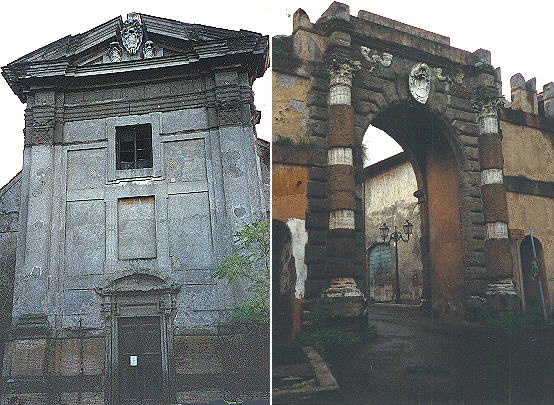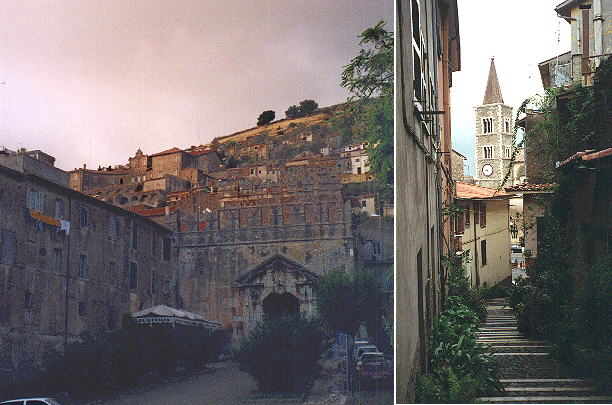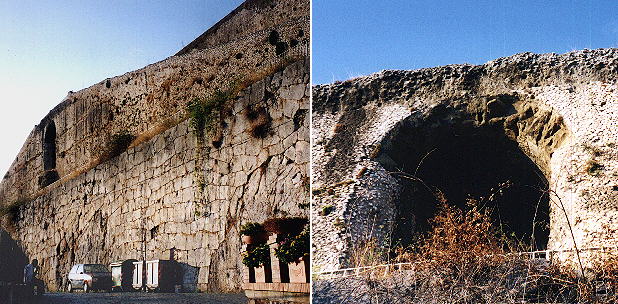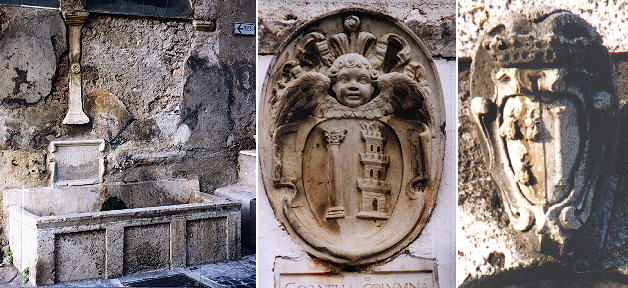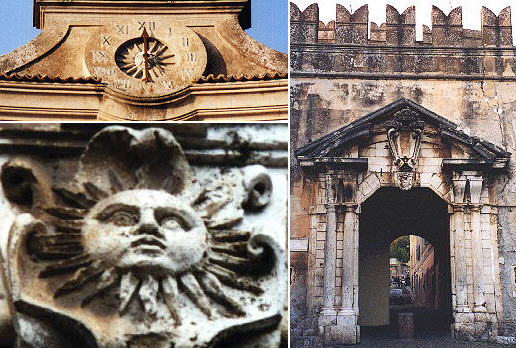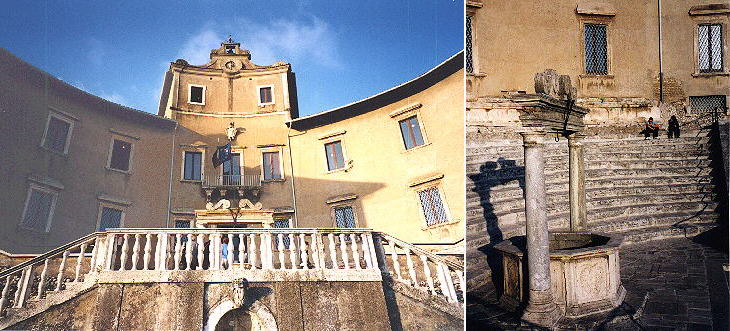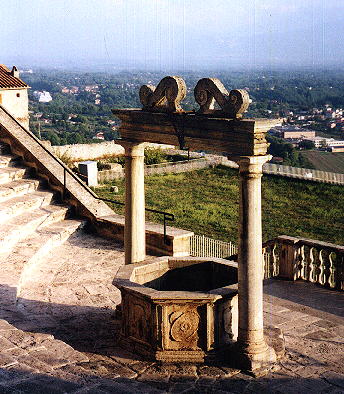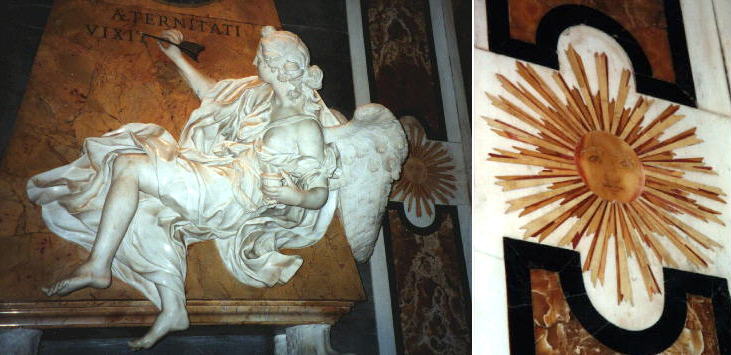  Ferdinand Gregorovius' Walks - Palestrina
En Route to Genazzano
Gregorovius then reaches San Cesareo on the slopes of the Alban hills a location notorious for the brigands' assaults of the stagecoaches which used this route. From San Cesareo Gregorovius sees Zagarolo, a fief of the Rospigliosi (the account shows how the popes in the XVIIth century had built their personal fortunes) who built there an imposing gateway. Palestrina Palestrina appears spread over a hill a few miles after San Cesareo. Gregorovius believes he owes his readers a detailed description of the town and of its history. Palestrina is the current name of Praeneste, one of the oldest towns of Latium and more important than Rome for many centuries: the town was at the very top of the hill and it was strongly fortified, nevertheless it could not resist the expansion of Rome. In 82 B.C. it was totally destroyed by Silla in his war against Marius. Silla killed all the male inhabitants and repopulated the newly founded town with his veterans. He built upon the so called colossal walls of Praeneste an immense temple Tempio della Fortuna Primigenia with an important oracle. An imperial villa was built in Praeneste and from Augustus to the IVth century the emperors often came to Praeneste to escape the Roman summer.
Praeneste in medieval times changed its name and became Palestrina, it was conquered by the Lombards and eventually was acquired by the Colonna family. In the fight between the Colonna and Bonifatius VIII, in 1298 it was conquered by the pope who destroyed completely the part of the town on the top of the hill, above the ruins of the Roman temple. Other sieges and destructions occurred in the XVth century. Historical Palestrina is built on the site (and with the stones) of the Roman temple. There are four streets aligned with the terraces of the temple, linked by flights of steps.
At several points both the "colossal" walls and the Roman additions are clearly visible. The pre-Roman walls are called colossal because it was thought that only giants could put them in place. Ferentino and Alatri, towns described by Gregorovius in another walk, both have impressive examples of these walls.
The Colonna sold Palestrina in 1630 to Carlo Barberini, brother of Urbanus VIII. There are still churches, palaces and buildings decorated with their coat of arms. The coat of arms on the palace at the top of the town shows the transition from the Colonna to the Barberini.
Palestrina has also many references to the Barberini. One of the gates is called Porta del Sole after a relief showing a radiant sun. It is not a Roman relief, but a reference to the sun of the Barberini, one of their heraldic symbols, which also shines at the top of Palazzo Barberini.
The self esteem of the Barberini family could not survive with the palace they got from the Colonna. Cardinal Francesco Barberini in 1636 required Pietro da Cortona to draw a reconstruction of the original temple and had the previous palace reshaped along the lines of the circular wall of the temple.
Gregorovius describes the view from the palace over the valley. His description of Palestrina is fairly accurate and complete. I will allow myself to add a detail by showing one of the richly decorated Barberini tombs in the church of S. Rosalia, next to the palace. It is by Bernardo Cametti and it clearly shows the influence of Bernini.
Gregorovius made popular Palestrina among German readers and spending a summer in one of the towns described in his books became fashionable. Among others, Thomas and Heinrich Mann spent a summer in Palestrina. Next page Introductory page on Ferdinand Gregorovius Genazzano Paliano Anagni Other walks: The Ernici Mountains: Ferentino Alatri The Volsci Mountains: Valmontone Segni Norma Cori On the Latin shores: Anzio Nettuno and Torre Astura Circe's Cape: Terracina San Felice The Orsini Castle in Bracciano Subiaco, the oldest Benedictine monastery See my Home Page on Baroque Rome or my Home Page on Rome in the footsteps of an XVIIIth century traveller. |
All images © 1999 - 2003 by Roberto Piperno. Write to romapip@quipo.it
